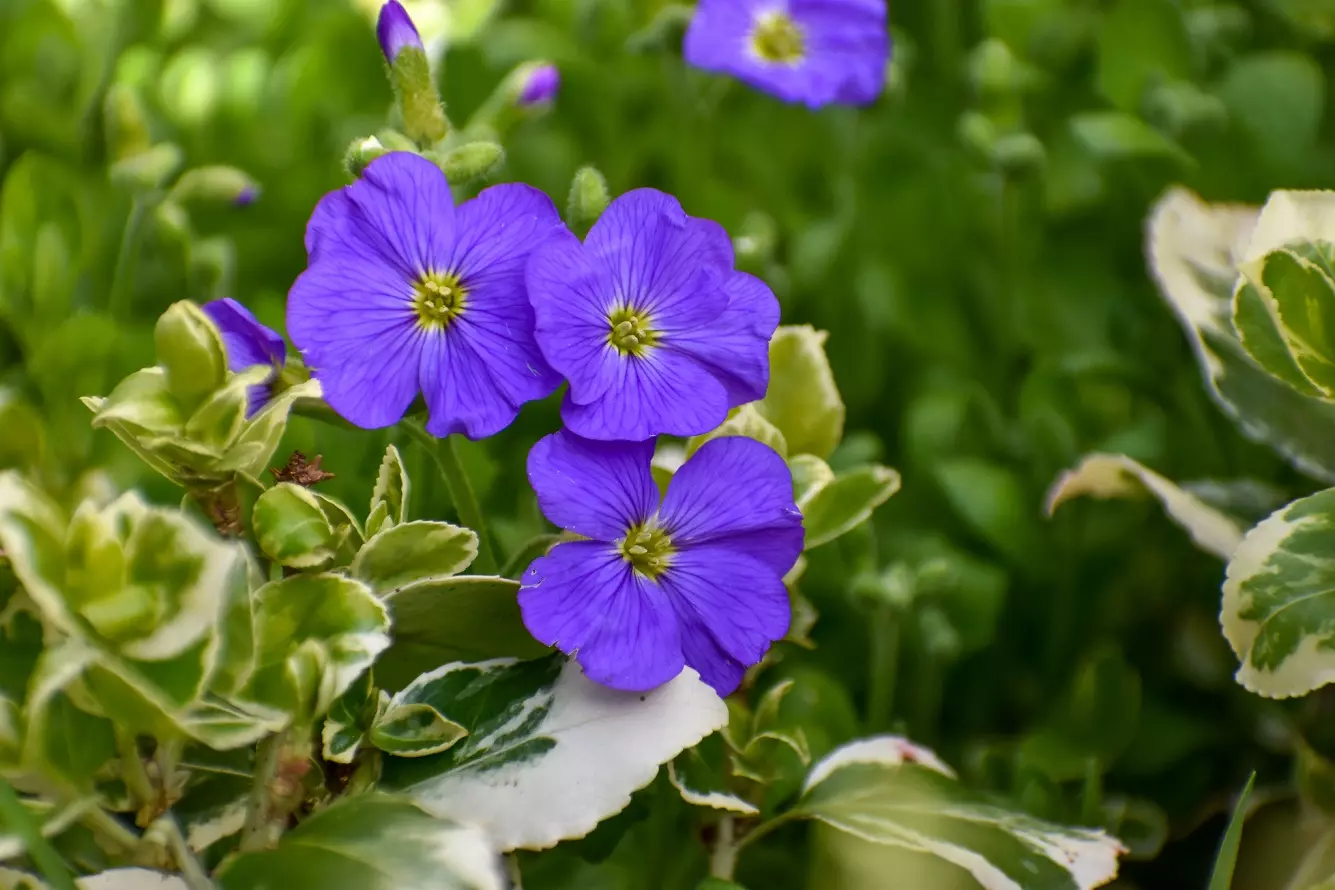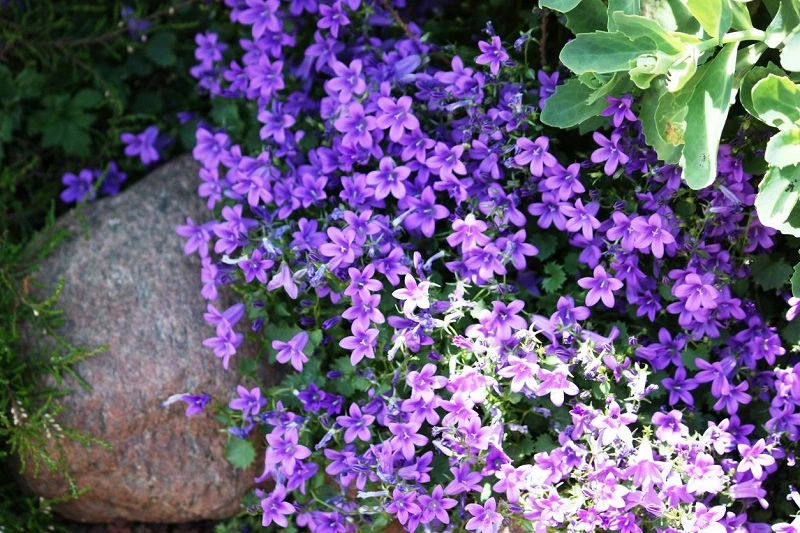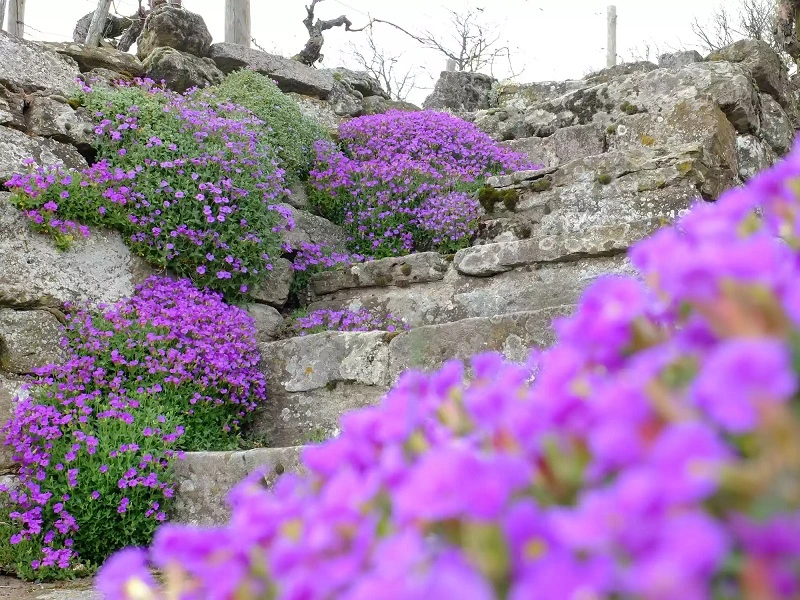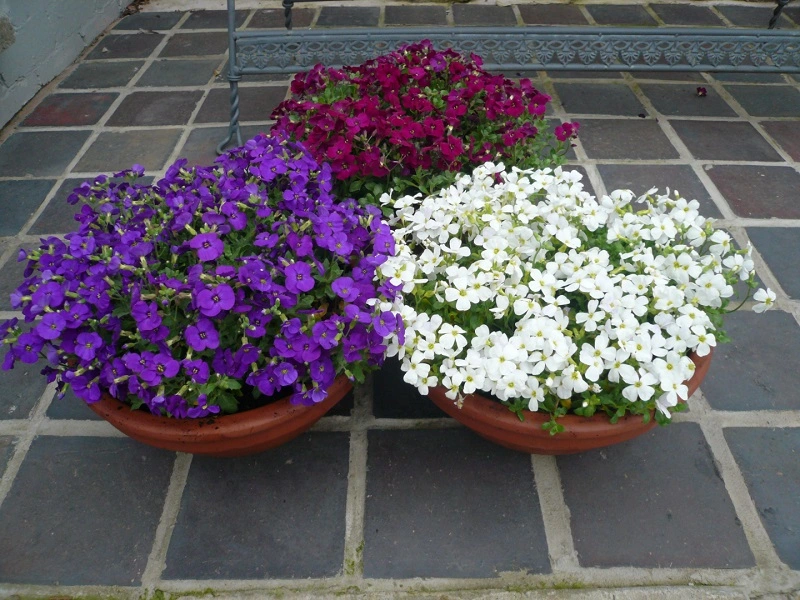Purple Rock Cress - Check How to Grow Beautiful Aubrieta Cascade
Aubrieta is a beautiful perennial which often decorates home gardens. It's small, but expands quickly, forming beautiful cascades. Depending on the variety, it can bloom from May to September. It's easy to take care of, which is a big advantage. Learn all about the needs of aubrieta and find out if it's a plant for you.

Aubrieta – what kind of plant is it and what does it look like?
Aubrieta (Aubrieta), or purple rock cress is a small plant grown in gardens. It has been quite popular in recent years. The flower belongs to the cabbage family (Brassicaceae). Its height typically doesn’t exceed 10 cm (4 in), usually it’s even shorter. Thanks to this, purple rock cress is a perfect rock garden plant – although it can also be planted in flowerbeds along with species of a similar height.
In addition to the small height, aubrieta is characteristic for its trailing growth style. Thanks to this, it covers the surface, forming a beautiful carpet. When in bloom, the plant develops many tiny flowers on short stems. They can have different colors. White and blue (purple) rock cress are the most popular. Red aubrieta is a rare variety.

When to sow aubrieta seeds?
Aubrieta should be planted in the garden in form of seedlings. You can purchase them in a garden store, or prepare them using seeds. The process can be done during any season, making sure you follow these steps in order:
- sowing the seeds in a container,
- watering,
- setting them aside in a cool place,
- pricking out to separate pots.
As the seedlings are prepared, wait until they can be planted in the garden.
When to plant aubrieta in garden?
Aubrieta can be planted in the garden both in spring and fall. As for spring, the best time is between mid-March and mid-April. If you want to plant the seedlings in fall, you can do it from the beginning of September until the end of October.

What’s the best soil for aubrieta plants?
Aubrieta prefers permeable and lightweight soils. It doesn’t have to be fertile, but it’s highly important that it has alkaline or neutral pH. This way, you can achieve the best results, and the plant becomes much less vulnerable to various diseases.
The soil for purple rock cress should also be moderately moist all the time. For this reason, controlling the soil is essential – especially during heat waves.
What is the best location for aubrieta?
The best location for an aubrieta plant is in moderate sunlight. But avoid places exposed to direct sunlight through the whole day. Also, don’t plant aubrieta next to tall flowers or ornamental bushes. Planted like this, your aubrieta will grow in shade, and as a result, it will produce fewer flowers.

Aubrieta - how to water and fertilize the plant
Aubrieta requires special treatment when it comes to watering. On one hand, it should be relatively wet all the time, but on the other – it cannot be overwatered, as its roots might start rotting pretty fast. What significance does it have for a gardener? Most importantly, it means that purple rock cress needs to be watered regularly, but scarcely. If the plant withers, it’s a sign that something bad is happening to it, or that it has too little water.
The method of fertilizing the plant is also quite distinct. Aubrieta cannot be fed with mineral fertilizers, as the plant doesn’t tolerate them. Such a product might cause more harm than good. Compost, manure or organic fertilizer is a much better solution. Also, don’t feed the plant too frequently. Use fertilizer no more than once per month.
Potted aubrieta – is it a good idea?
Growing aubrieta in a container is unusual, but it doesn’t mean it’s impossible. Remember about certain basic care rules, which are similar as when growing the plant in the garden. Picking a proper container is also very important. Because the plant spreads extensively – the box cannot be too small. A pot of quite a large diameter is the best option – plant the seedling in the middle. Aubrieta planted like this is a perfect decoration for gardens and patios.
Aubrieta cascade – blooming
Aubrieta is one of the longest-blooming plants in the garden. Note that there are several varieties of this plant, and they bloom a few times in one year. The typical months of blooming period for aubrieta are April, May, and June. Some varieties develop flowers again in July, August, and sometimes in September as well.
Flowers can have different colors. Although blue and purple rock cress plants are the most popular, aubrieta can bloom in the following shades:
- white,
- pink,
- red,
- magenta.
The very pleasant and quite intense smell is another noteworthy feature of this species. It spreads around the location where an aubrieta cascade grows. It’s attractive not only for humans, but most importantly – insects.

What to do with aubrieta after the blooming season?
The treatment after the plant finishes blooming is very important, as this way you can keep it in its good condition. When the flowers die, they require deadheading.
What’s more, aubrieta also needs trimming if there is a problem with the leaves. It usually happens in summer, when the plant is exposed to high temperatures. That’s when the plant’s parts become brown – they have to be removed to rejuvenate the aubrieta and encourage its growth.
Can you transplant aubrieta?
Aubrieta is a perennial, so it can grow in one location in the garden for many years. Note that the plant doesn’t like frequent transplanting. Regardless, experienced gardeners suggest repositioning the plant every 3-4 years. Thanks to this, it grows better.
It’s essential to stick to certain recommended dates for replanting aubrieta. Early spring is the best time – between the middle and end of March. Autumn is good, too – during the end of September and the beginning of October.
Popular varieties of aubrieta plants
There are many varieties of aubrieta, as is a popular plant. Some are picked more commonly than others. This group includes cultivars such as:
- Havelberg,
- Hürt,
- Blue King,
- Winterberg,
- Cascade Purple,
- Doctor Mules,
- Red Carpet,
- Bressingham Pink,
- Royal Blue.
Aubrieta varieties differ between each other not only in the color of the flowers, but also their size. Some are much bigger than others, e.g., aubrieta ‘Doctor Mules’ and aubrieta ‘Cascade Purple’.

What are the most common diseases of aubrieta?
Aubrieta is quite resistant to diseases, so they usually don’t occur. Deformed or discolored leaves are the only exception. But if they happen, just cut them off and the plant will get better. Sometimes, the plant’s growth might get hindered. In such a case, the plant has to be transplanted and fed with organic fertilizers.
Is aubrieta vulnerable to pests?
When it comes to pests, aphids are the only danger to aubrieta. But you can protect the plant from them by certain preventive measures. Just use special spray in spring to repel these insects.

📍 When to plant aubrieta?
Aubrieta can be planted in gardens both in spring and fall. If you pick spring, March and April are the best months for planting aubrieta rock cress. When planting in fall, September is the best time to do it. Aubrieta seeds can be planted in containers anytime in the year.
📍 When does aubrieta bloom?
Depending on the variety, aubrieta blooms from April to June. Some plants bloom once more. Flowers can remain even until September.
📍 How to grow aubrieta cascade?
Aubrieta requires a sunny and warm location. The soil should have neutral or alkaline pH, and be moderately moist. Make sure to feed the plant with organic fertilizers, and deadhead flowers after they finish blooming. Transplant your aubrieta every 3-4 years.
📍 How long does aubrieta bloom?
Aubrieta usually begins blooming in mid-April and finishes in June. On average, the flowers stay for 2 months. Some varieties bloom again the same year.
Featured articles




